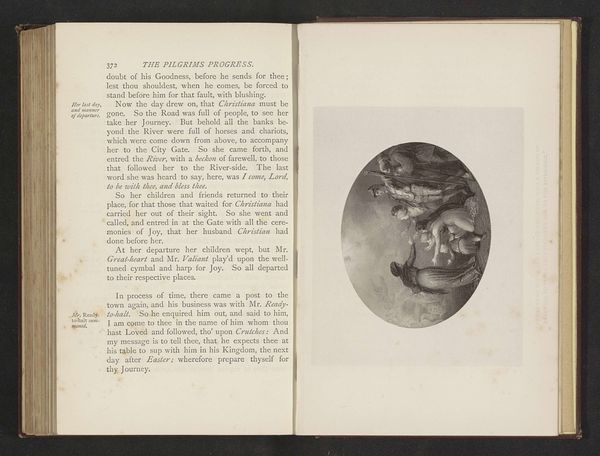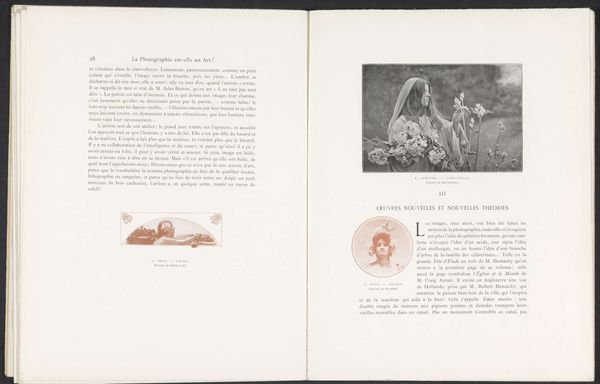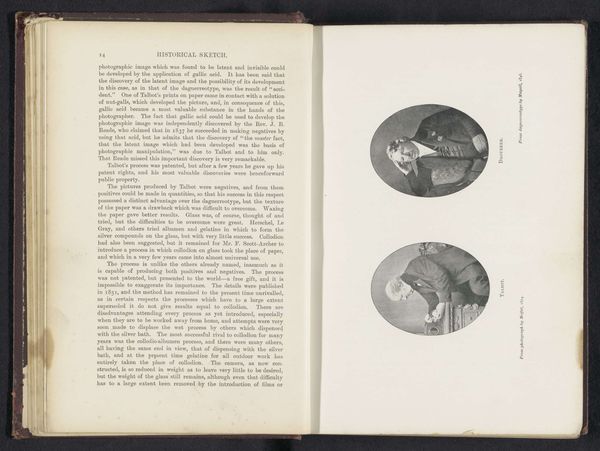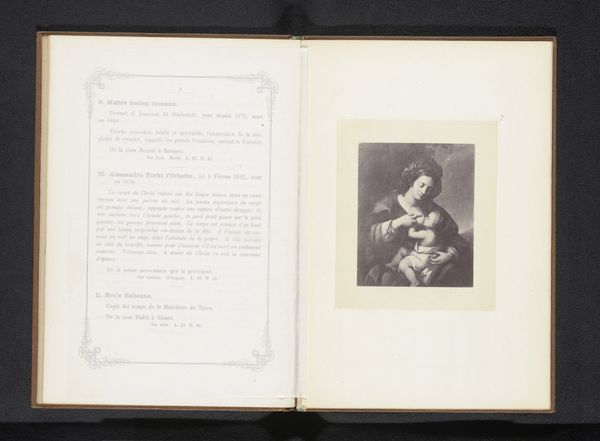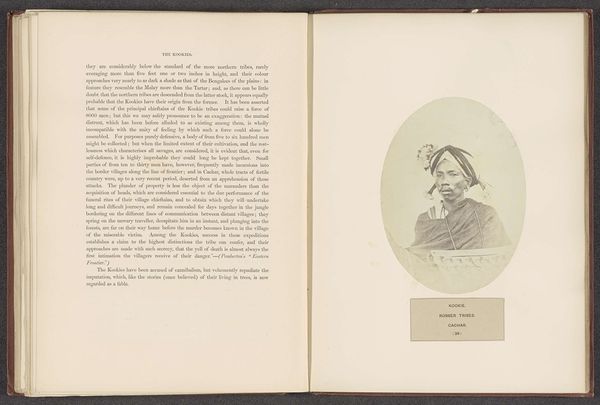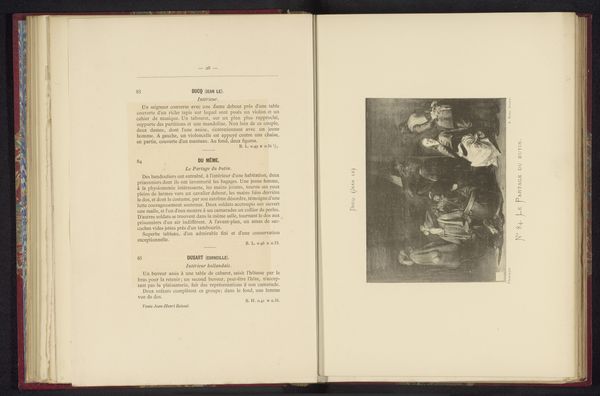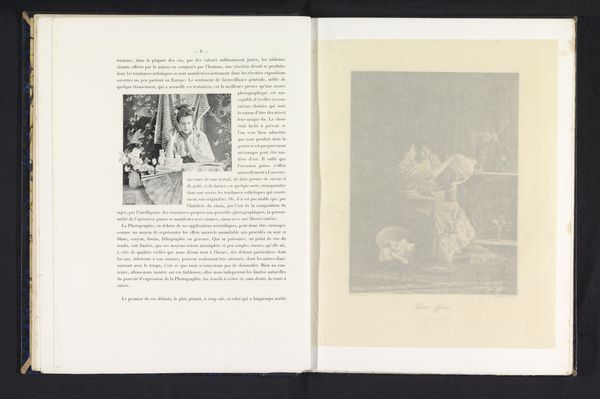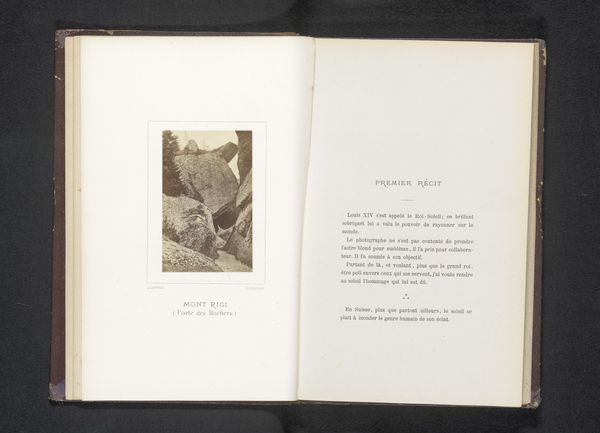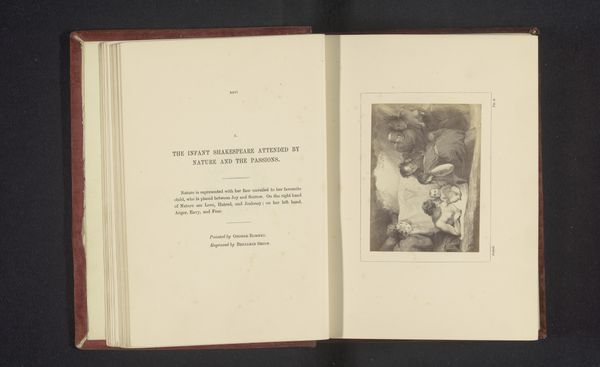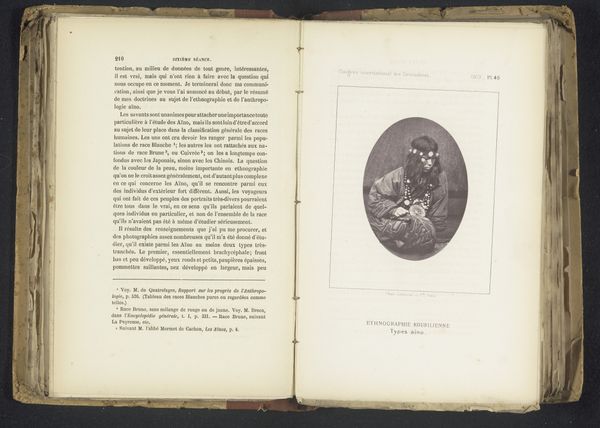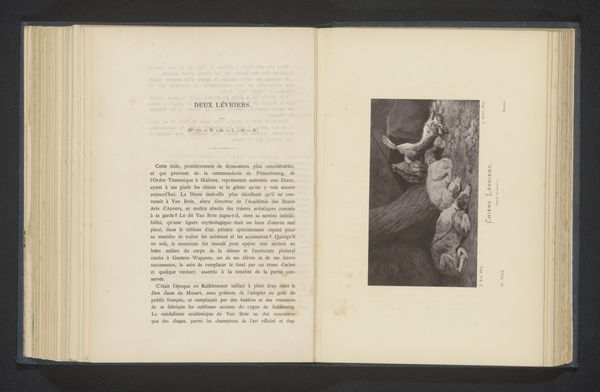
print, photography
#
portrait
#
script typeface
#
sand serif
#
aged paper
#
art-nouveau
#
script typography
#
pictorialism
# print
#
hand drawn type
#
personal journal design
#
photography
#
personal sketchbook
#
hand-drawn typeface
#
thick font
#
handwritten font
Dimensions: height 330 mm, width 255 mm
Copyright: Rijks Museum: Open Domain
Curator: Immediately, this makes me think of a hazy summer afternoon, the kind where everything slows down. It feels very languid and dreamy. Editor: Indeed. What we are observing here is "Twee vrouwen", or "Two Women", a photographic print created by Robert Demachy some time before 1899, now held at the Rijksmuseum. Curator: Before 1899, wow! It's amazing how timeless it feels. I see this woman reclining, almost dissolving into her surroundings. Was Demachy experimenting with making photography look less…photographic? Editor: Precisely. Demachy was a leading figure in the Pictorialist movement. Pictorialists sought to elevate photography to the level of fine art, often manipulating their prints to resemble paintings or drawings. They valued artistic expression over purely documentary representation. Curator: I can see that clearly in the soft focus and the warm, sepia tones. There’s a painterly quality. And notice the second figure behind the first, as she seems blurred and half-there, blending almost completely into the indistinct background Editor: Exactly. It challenges the idea of objective truth, as in, 'the camera never lies'. Instead, he seems more interested in mood and atmosphere, creating an image that evokes emotion rather than strictly replicating reality. Curator: The intimacy too. There is an unquestionable intimate feeling that I can’t quite name, and find myself returning to the scene, just sitting here and letting that strange feeling grow. Editor: This piece exists in the intersection of social changes around womanhood, too. Consider that as photography became increasingly accessible, portraits shifted from exclusive status symbols to markers of everyday life and middle-class representation. How could artists like Demachy keep their craft at the level of fine art as technology progressed? Curator: I hadn't considered that. It’s fascinating how the artistic and social contexts are all layered here in what looks at first to be just a dreamy photograph. Thanks to his technique and how he places his sitters, what results is less like documentation and closer to emotion and beauty. I won’t be forgetting that anytime soon. Editor: Nor I. A testament to how art can embody and comment on shifts both aesthetic and sociological.
Comments
No comments
Be the first to comment and join the conversation on the ultimate creative platform.
